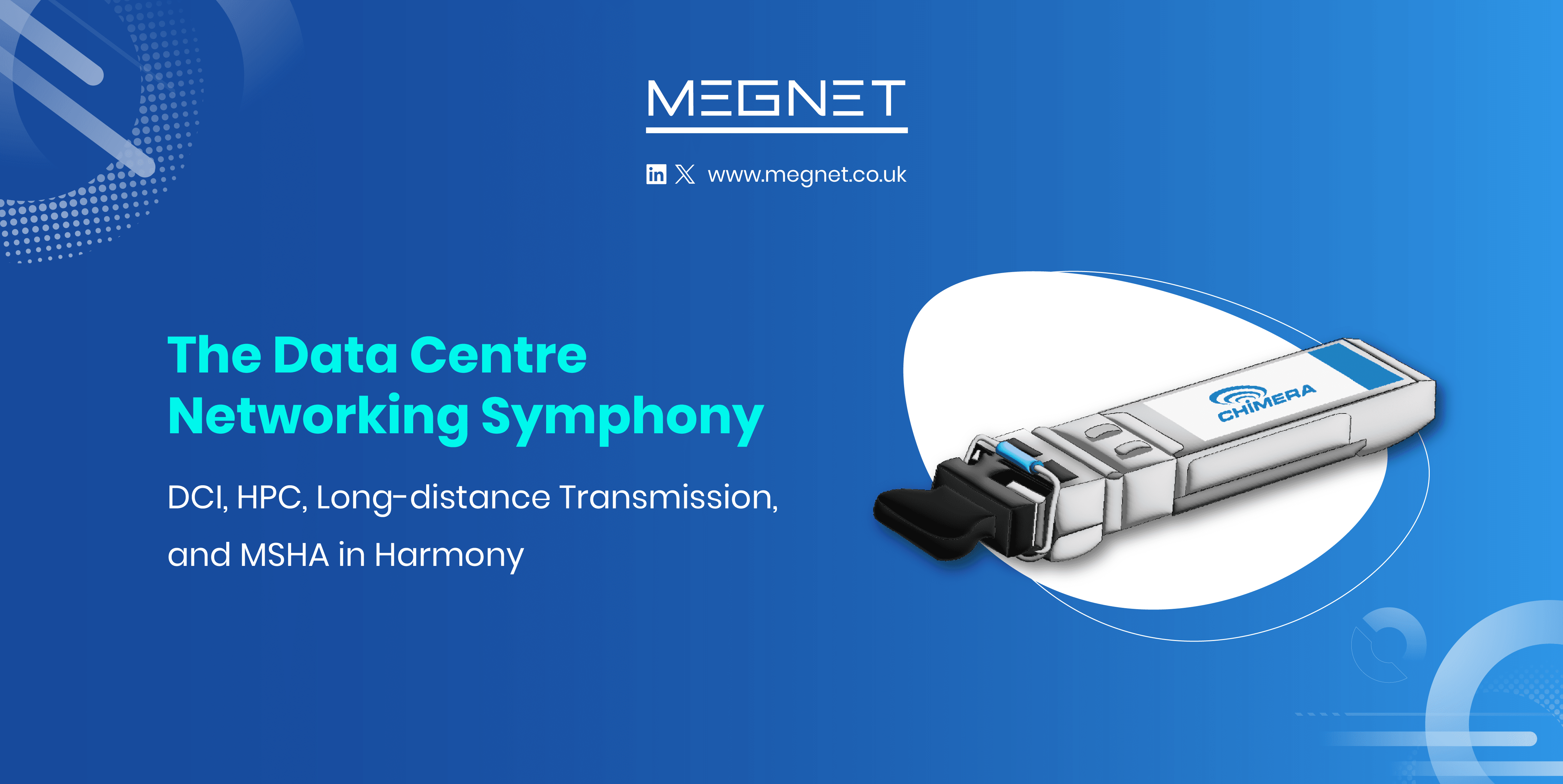
The digital age thrives on data. From streaming your favourite show to running complex simulations, information zips across vast networks at lightning speeds. But how does this intricate dance between geographically separated data centres and high-performance computing (HPC) facilities happen? The answer lies in a powerful trio: Data Centre Interconnect (DCI), long-distance transmission, and Multi-service Hybrid Access (MSHA). This blog dives deep into these concepts, highlighting the critical role networking products like optical transceivers, media converters, and patch cables play in making it all work.
Data Centre Interconnect – The Information Highway
Imagine data centres as bustling cities, each holding a wealth of information. DCI acts as the high-speed highway connecting these cities, enabling seamless data exchange. But DCI is not a one-size-fits-all solution. The technology employed depends on the distance between data centres:
- Short-haul DCI (up to 80km): This workhorse uses cost-effective solutions like 100G DWDM (Dense Wavelength-Division Multiplexing) optical modules. DWDM cleverly transmits multiple data streams on a single fibre optic cable, maximizing bandwidth without breaking the bank. Here is where our heroes come in:
- Optical Transceivers: These marvels convert electrical signals from network devices into light pulses for transmission over fibre optic cables. Look for high-quality transceivers compatible with your DCI solution for best performance.
- Patch Cables: The unsung heroes, patch cables physically connect network devices within the data centre and to the DCI link. Choose high-performance, low-loss patch cables to ensure smooth data flow.
- Long-haul DCI (beyond 80km): For longer distances, we need heavy-duty solutions like coherent optical modules. These marvels offer superior signal clarity over vast distances, making them ideal for geographically dispersed data centres.
High-Performance Computing – Unleashing the Data Kraken
HPC clusters are the data krakens of the digital world. These clusters combine multiple powerful computers to tackle complex tasks that would bring a single machine to its knees. Scientific simulations, weather forecasting, and big data analysis are just a few examples where HPC shines. But these beasts require a robust internal network to help communication between individual compute nodes. Here is where our networking heroes step up again:
- High-Speed Cables: HPC clusters demand lightning-fast data exchange. Invest in high-bandwidth cables like InfiniBand or 10 Gigabit Ethernet to ensure seamless communication within the cluster.
- Media Converters: Sometimes, different network types need to talk to each other within an HPC cluster. Media converters translate signals between various media types (e.g., copper to fibre), ensuring smooth data flow regardless of the underlying infrastructure.
Long-Distance Transmission – Reaching Across Continents
The information highway does not stop at national borders. Long-distance transmission technologies enable data exchange between continents, easing global collaboration and resource sharing. Submarine cables, a marvel of engineering, form the backbone of long-distance data transmission. These cables, laid across ocean floors, rely on high-performance optical transmission technologies like those used in long-haul DCI.
The Networking Product Symphony: A Flawless Performance
Throughout this interconnected world, networking products play a critical, yet often unseen, role.
- Optical Transceivers: Imagine them as the conductors, ensuring clear and efficient signal conversion between electrical and optical domains. opt for high-quality transceivers designed for your specific application (e.g., DCI, HPC) to guarantee best performance.
- Patch Cables: These are the reliable musicians, faithfully carrying the data symphony within data centres and connecting devices to the DCI link. Choose low-loss patch cables with proper lengths and connectors to support signal integrity.
- Media Converters: Think of them as the versatile adapters, allowing different network instruments (copper, fibre) to play together harmoniously within an HPC cluster.
- High-Speed Cables: These are the high-performance vocalists, enabling rapid data exchange within HPC clusters for a flawless performance.
Multi-service Hybrid Access – The All-access Pass to Connectivity
The digital landscape is becoming increasingly mobile and diverse. Users require seamless access to data and applications across various devices and locations. This is where Multi-service Hybrid Access (MSHA) comes into play. MSHA acts as an all-access pass to connectivity, offering a unified platform for delivering voice, data, and video services over a converged network infrastructure.
Here’s how MSHA helps various user groups:
- Enterprise Users: MSHA empowers businesses to combine multiple network services onto a single platform, simplifying management and reducing costs. It also eases secure remote access for employees, enhancing collaboration and productivity.
- Mobile Users: With MSHA, users can enjoy seamless connectivity across various access technologies like cellular, Wi-Fi, and fixed broadband. This ensures uninterrupted access to data and applications, regardless of location.
- Smart Homes and Businesses: MSHA paves the way for the Internet of Things (IoT) by providing a robust and scalable network for connecting an ever-growing number of devices. This enables smart home features, intelligent building automation, and real-time data collection for insightful analytics.
Networking Products Powering Multi-Service Hybrid Access:
Our trusty networking product heroes play a crucial role in MSHAs successful operation:
- Media Converters: MSHA networks often integrate diverse access technologies with varying physical media (coaxial, fibre, etc.). Media converters ensure seamless signal conversion between these different media types, enabling a unified network experience.
- Fibre Optic Cables: MSHA leverages the high bandwidth and low latency of fibre optic cables for backhaul connections, providing a reliable and high-capacity foundation for the network.
- Ethernet Switches: These intelligent devices act as the traffic directors within an MSHA network. They efficiently route data packets between different access points and user devices, ensuring smooth and secure communication.
The Unsung Heroes: Network Management Tools
While the networking products take centre stage, the silent heroes behind the scenes are network management tools. These tools provide administrators with a comprehensive view of the network, enabling them to:
- Monitor Performance: Find bottlenecks, track bandwidth usage, and proactively address potential issues.
- Configure Devices: Easily configure and manage various network devices within the DCI, HPC cluster, and MSHA network.
- Ensure Security: Implement robust security protocols to protect sensitive data across the entire network infrastructure.
Investing in the Future: A Network Ready for Anything
By investing in high-quality networking products and robust network management tools, you are building a network infrastructure that can adapt to the ever-evolving demands of the digital age.
Optimizing Your Network
This blog has provided a glimpse into the intricate world of DCI, HPC, long-distance transmission, and MSHA. It is highlighted the critical role that seemingly simple networking products play in enabling this technological marvel.
Here is how you can act:
- Find Your Needs: Carefully assess your specific requirements, whether it is high-performance DCI, a powerful HPC cluster, or a robust MSHA network.
- Consult with Experts: Partner with a reliable network equipment provider who can recommend the right networking products (optical transceivers, media converters, patch cables, etc.) based on your unique needs.
- Invest in Quality: Do not compromise on quality. Choose well-established brands known for their reliable and high-performance networking products.
- Embrace Network Management: Implement robust network management tools to check, configure, and secure your network infrastructure.
By following these steps, you can build a network that is not only efficient and reliable but also future-proofed to handle the ever-growing demands of the data-driven world.
Security – The Guardian of the Digital Realm
In the fast-paced world of data exchange, security is paramount. As data travels across vast networks, it becomes vulnerable to various threats like cyberattacks, unauthorized access, and data breaches. Ensure the integrity and confidentiality of information, a robust security posture is essential.
Here’s how security plays a vital role in each of our key areas:
- DCI Security: Data centres house sensitive information. DCI links need robust encryption protocols like AES (Advanced Encryption Standard) to safeguard data in transit. Additionally, authentication mechanisms ensure only authorized users and devices can access the network.
- HPC Security: HPC clusters often manage confidential data for research or financial institutions. Implementing access control measures like role-based permissions and multi-factor authentication helps restrict access and prevent unauthorized data manipulation.
- Long-distance Transmission Security: Submarine cables and terrestrial long-distance links are prime targets for cyberattacks. Encryption is crucial, but physical security measures like cable monitoring and tamper detection systems are equally important.
- MSHA Security: MSHA networks converge various access technologies, potentially creating security vulnerabilities. Implementing network segmentation isolates different user groups and applications, minimizing the impact of a security breach. Additionally, firewalls and intrusion detection/prevention systems (IDS/IPS) function as guardians, constantly checking network traffic for suspicious activity.
Our trusty networking heroes play a part in fortifying network security:
- Secure Transceivers: Invest in optical transceivers with built-in encryption capabilities to safeguard data at the physical layer.
- Managed Switches: These intelligent switches offer advanced security features like access control lists (ACLs) and port security to restrict unauthorized access to specific network segments.
- Firewalls: These function as a shield, filtering incoming and outgoing traffic based on predefined security policies.
Network management tools, once again, play a crucial role in security:
Security Information and Event Management (SIEM): SIEM systems aggregate security data from various network devices, offering a centralized view of potential threats and enabling faster incident response.
Vulnerability Management Tools: These tools scan network devices for known vulnerabilities and misconfigurations, allowing initiative-taking remediation to prevent potential security breaches.

The Green Gig – Sustainability in High-Performance Networking
Security is not just about technology; it is also about people. Regular security awareness training for employees helps them find and avoid social engineering attacks, phishing frauds, and other security risks.
The digital age thrives on data, but it also comes with an environmental cost. Data centres consume a significant amount of energy to power and cool their infrastructure. As we strive for high-performance networks, it is crucial to consider sustainable practices to minimize our environmental footprint.
Here’s how sustainability can be integrated into our key focus areas:
- Energy-Efficient DCI: Newer DCI technologies like coherent optics offer higher bandwidth transmission with lower power consumption compared to traditional methods. Additionally, using energy-efficient cooling systems within data centres can significantly reduce their carbon footprint.
- Green HPC: Implementing power management strategies within HPC clusters can perfect resource use and reduce energy consumption. Utilizing air cooling instead of traditional water-based cooling systems can further contribute to a greener HPC environment.
- Sustainable Long-distance Transmission: Research is ongoing for more energy-efficient submarine cable designs that use innovative materials and cooling methods to minimize power consumption. Additionally, using renewable energy sources to power terrestrial long-distance transmission infrastructure can contribute to a more sustainable network.
- Eco-conscious MSHA: MSHA networks present an opportunity to combine network infrastructure, potentially reducing the overall number of network devices and associated power consumption. Additionally, using energy-efficient access technologies like modern Wi-Fi standards and Power over Ethernet (PoE) can further contribute to a greener network.
Networking Products for a Sustainable Future:
Our heroes, the networking products, can play a role in promoting sustainability:
- Energy-Efficient Transceivers: Look for optical transceivers with features like low-power consumption modes and Dynamic Optical Power (DOM) technology that adjusts power levels based on transmission distance.
- Green Switches: Modern Ethernet switches often come with features like Energy-Efficient Ethernet (EEE) that can automatically power down unused ports or adjust power consumption based on traffic load.
Network management tools can be used to promote sustainability:
- Power Monitoring: Monitoring network device power consumption through management tools allows for finding areas for optimization and implementing power-saving measures.
- Temperature Monitoring: Keeping best operating temperatures within data centres and network equipment rooms can significantly affect energy efficiency. Network management tools can provide real-time temperature data for initiative-taking cooling system adjustments.
Building a sustainable network requires a collaborative effort. Here’s how different stakeholders can contribute:
- Network Equipment Manufacturers: Developing energy-efficient networking products with eco-friendly materials will be crucial.
- Data Centre Operators: Implementing sustainable practices within data centres, such as using renewable energy sources and perfecting cooling systems, is essential.
- Network Users: Being mindful of data usage and adopting cloud-based solutions that promote resource consolidation can contribute to a greener digital landscape.
Diving Deeper – A Technical Look at Networking Products
Throughout this blog, we have highlighted the importance of various networking products in enabling high-performance networks. Now, let us take a deeper dive into these key players:
- Optical Transceivers: The Data Chameleons
Think of optical transceivers as the translators of the networking world. They convert electrical signals from network devices into light pulses for transmission over fibre optic cables. Here are some factors to consider when choosing optical transceivers:
- Form Factor: Different transceiver form factors exist (e.g., SFP+, QSFP28) to fit various switch and router interfaces. Ensure compatibility with your equipment.
- Wavelength: Select the proper wavelength (e.g., 1310nm, 850nm) based on the distance you need to cover, and the type of fibre optic cable used.
- Data Rate: Choose a transceiver that supports the desired data rate (e.g., 10GbE, 40GbE) for your application.
- Reach: Consider the distance your data needs to travel and select a transceiver with the proper reach (e.g., 10km, 40km).
- Brand and Reputation: Invest in well-regarded brands known for reliable and high-performance transceivers.
- Media Converters: The Bridge Builders
Media converters connect devices with different physical media types, ensuring seamless communication within a network. Here is what to consider when choosing media converters:
- Media Type Conversion: Find the media types you need to convert (e.g., copper to fibre, coaxial to fibre).
- Data Rate Support: Ensure the converter supports the data rate needed for your network traffic.
- Managed vs. Unmanaged: Managed converters offer advanced features like configuration and monitoring capabilities, while unmanaged converters are plug-and-play for simpler applications.
- Patch Cables: The Unsung Heroes of Data Flow
Patch cables may seem simple, but they play a critical role in ensuring smooth data transmission within data centres and connecting devices to the network. Here is what to consider when choosing patch cables:
- Cable Length: Select the proper cable length to reach your desired connection points without excess slack.
- Cable Type: Choose between various cable types like single-mode or multi-mode fibre optic cables, depending on your application and distance requirements.
- Connector Types: Ensure the connectors on the patch cable match the ports on your network devices (e.g., LC, SC for fibre optic cables).
- Cable Quality: Invest in high-quality patch cables with low signal loss to keep best data transmission performance.
- High-Speed Cables: The Information Autobahn
HPC clusters demand lightning-fast data exchange. High-speed cables like InfiniBand or 10 Gigabit Ethernet cables ensure seamless communication within these clusters. Here is what to consider when choosing high-speed cables:
- Cable Standard: Select the proper cable standard like InfiniBand or a specific version of Ethernet (e.g., 10GbE, 40GbE) compatible with your HPC cluster architecture.
- Cable Length: Minimize cable length within the cluster to reduce signal degradation and keep best performance.
- Connector Types: Ensure the connectors on the cable match the ports on your HPC cluster nodes.
- Cable Shielding: Consider shielded cables to minimize interference and ensure reliable data transmission within the high-density environment of an HPC cluster.

A Symphony of Performance and Sustainability
High-performance networks are vital for the digital age, but they do not have to come at the expense of environmental responsibility. By embracing sustainable practices, using energy-efficient networking products, and fostering collaboration, we can create a future where data exchange thrives in harmony with the environment.
The Future of High-Performance Networking:
This blog has provided a glimpse into the exciting world of DCI, HPC, long-distance transmission, and how they are shaped by security considerations and sustainability practices. As technology continues to evolve, we can expect even more advancements in:
Higher Bandwidth Technologies: Research and development in areas like silicon photonics promise even higher bandwidth DCI solutions with lower power consumption.
Cognitive Networks: Networks that can learn, adapt, and optimize themselves based on traffic patterns and user demands will revolutionize network management and efficiency.
Quantum Networking: This emerging technology holds the potential for ultra-secure and high-bandwidth communication, opening doors for entirely new applications.
FAQ's
Reduces latency for geographically dispersed data access, Enables efficient resource sharing between data centres. Improves scalability for cloud-based applications.
Short-haul DCI (up to 80km) uses cost-effective solutions like 100G DWDM optical modules. Long-haul DCI (beyond 80km) uses coherent optical modules for superior signal clarity over vast distances.
HPC clusters generate significant heat due to their high processing power. Efficient cooling systems are essential to keep best performance and prevent overheating.
Network segmentation isolates different user groups and applications, minimizing breach impact. Strong authentication protocols and firewalls help protect against unauthorized access.
Consider factors like form factor, wavelength, data rate, reach, and brand reputation. Ensure compatibility with your existing network equipment. Contact Us To Know More
They offer significantly faster data exchange compared to traditional Ethernet cables. This eases rapid communication between individual compute nodes within the cluster.
Higher bandwidth technologies like silicon photonics promise even greater efficiency. Cognitive networks that can learn and adapt to traffic patterns are on the horizon. Quantum networking offers potential for ultra-secure and high-bandwidth communication.
Network management tools provide real-time data on network traffic, device performance, and potential issues. These tools help proactive troubleshooting and optimisation of network performance.

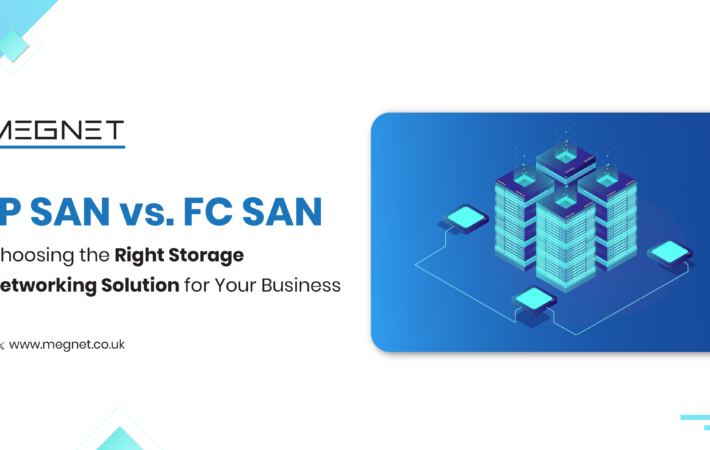
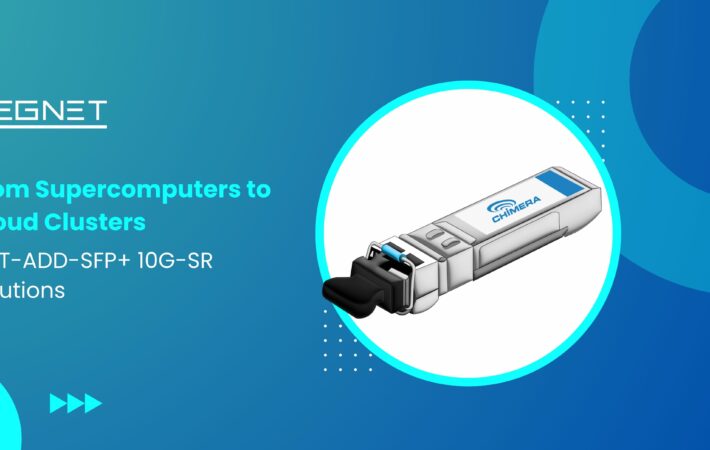
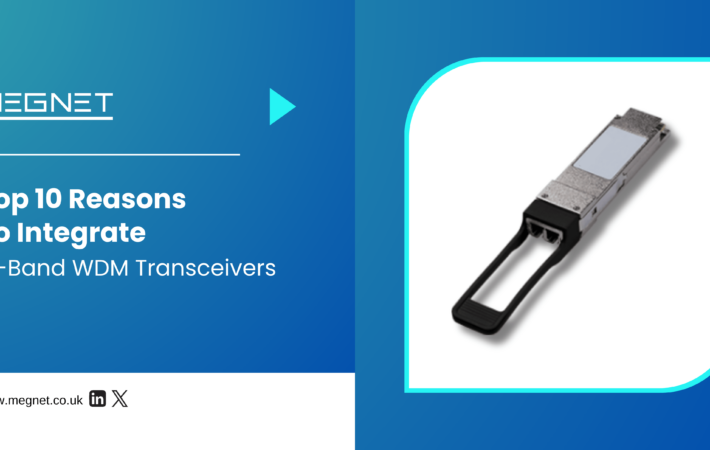
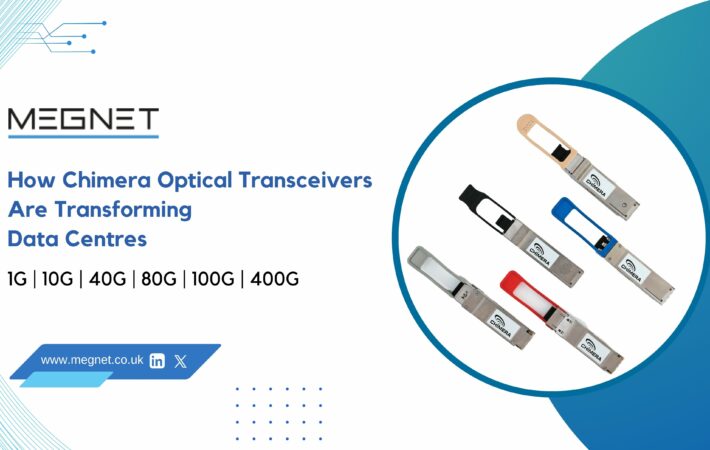
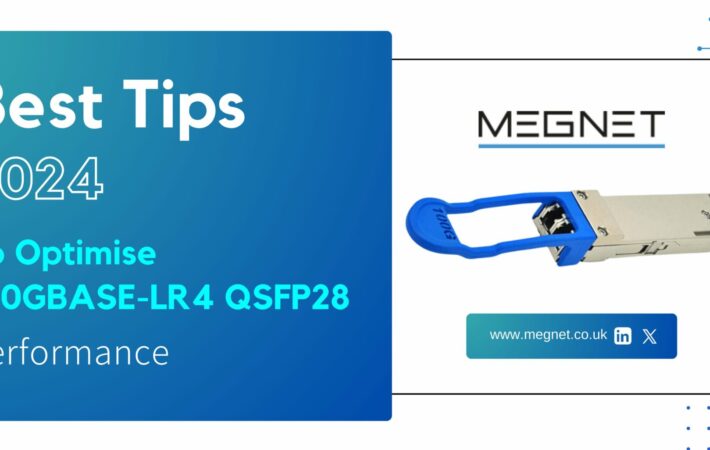


Leave a comment
Your email address will not be published. Required fields are marked *